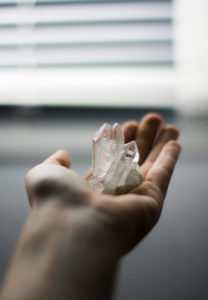Ice versus heat
Whether you’re an athlete or an active older adult enjoying your retirement, injuries unfortunately are an inevitable part of life. Traditional wisdom says ice and heat can help heal injuries, but you may be asking, “Should I use ice or heat for pain?” The answer depends ondifferent factors, such as what type of pain you’re experiencing. In this blog, we will discuss ice and heat, and how these two different types of therapy affect your body as well as when to use them and how to use them.
Before we can look at when ice is the right way to treat an injury, it’s helpful to understand what
ice does to your body. The short answer is that ice can help reduce:
Inflammation/swelling
Blood flow/bruising
Muscle spasms
Pain
When the injury first occurs, it is normal for the area to become inflamed. It’s a natural part of healing and allows immune cells to better access the injured area. Though inflammation can be positive, to an extent, it can also get out of hand and cause debilitating swelling and pain! Ice degrades swelling and inflammation. However, if applied for too long, ice can also cause serious issues like frostbite. Now let’s focus on times when it’s better to use ice.
Acute injuries: In general, ice is best for acute injuries, which are injuries that affect a specific area on the body. An example of an acute injury is an ankle sprain, which will cause your ankle to become swollen and bruised, but shouldn’t directly affect other parts of your body.
Recent injuries: Another clue that ice is best is if the injury happened relatively recently. Swelling tends to be the most extreme when you first become injured, especially within the first 48 hours.
Overuse injuries: Athletes sometimes use ice to treat chronic inflammation in specific areas, such as a muscle, from overuse. In these cases, you should only apply ice after and never before activity. If you have chronic conditions, don’t treat them with ice outside a doctor’s supervision.
Another way to answer the question of ice vs. heat for pain is to look at times when you definitely should not use ice, in some cases heat is a much better choice. Below are a few examples of when you should NOT apply ice to your injury.
Before physical activity: If you are about to be active, you should not use ice. Ice will cause the muscle to contract. You could cause further injury by icing and then exercising the muscle.
On a tight muscle: If you’re in discomfort because your muscle is tight, icing is not the answer. Icing the muscle will cause it to contract even more heat is a much better option for relaxing your muscles.
On an open wound: You shouldn’t place ice on an open wound or on skin that is burned or blistered. If your doctor approves, take special care to keep a barrier of some kind between the ice and your healing skin.
In several ways, heat has the opposite outcome of ice. Whereas ice causes muscles to tighten and restricts blood flow, heat does the following:
Increases blood flow
Relaxes muscles
Heals damaged tissue
Soothes aches

Seeing as ice and heat are not interchangeable. When is heat the right choice for an injury? Below are some instances when heat is the best choice:
Soreness or aches: If you would describe your pain as soreness or an achy feeling rather than a throbbing or sharp pain, heat is an excellent option to bring you some relief.
Chronic muscle pain: If you have ongoing pain in a muscle, it’s likely because the muscle is tight and stiff. In these cases, heat may help relax the muscle.
Overuse injuries: Overuse injuries are one instance both ice and heat have in common. However, you should use heat to treat an overuse injury before you plan to use the affected area. Then, use ice after the activity. Above are instances where heat is an effective form of treatment, but there are other times when heat therapy can do more harm than good, such as:
After physical activity: Heat can loosen up muscles before physical activity, but it’s never a good idea right after a workout. If you just exercised, and you’re experiencing pain, you may want to ice the affected area.
On an open wound: This one goes for both ice and heat. If you have a cut, burn or another type of open wound on the skin, don’t apply heat to it. Ask a doctor how you should proceed and cautiously follow their instructions.
If you get overheated: If you have an elevated body temperature due to a high fever or heat stress of some kind, you should not apply heat to any part of your body. When your body is already hot, adding more heat will not help.
Healing is an evolving process and these are guidelines not meant to take the place of professional opinions. As always, we are here for you. Reach out today for a free consultation to discuss your specific needs.e
